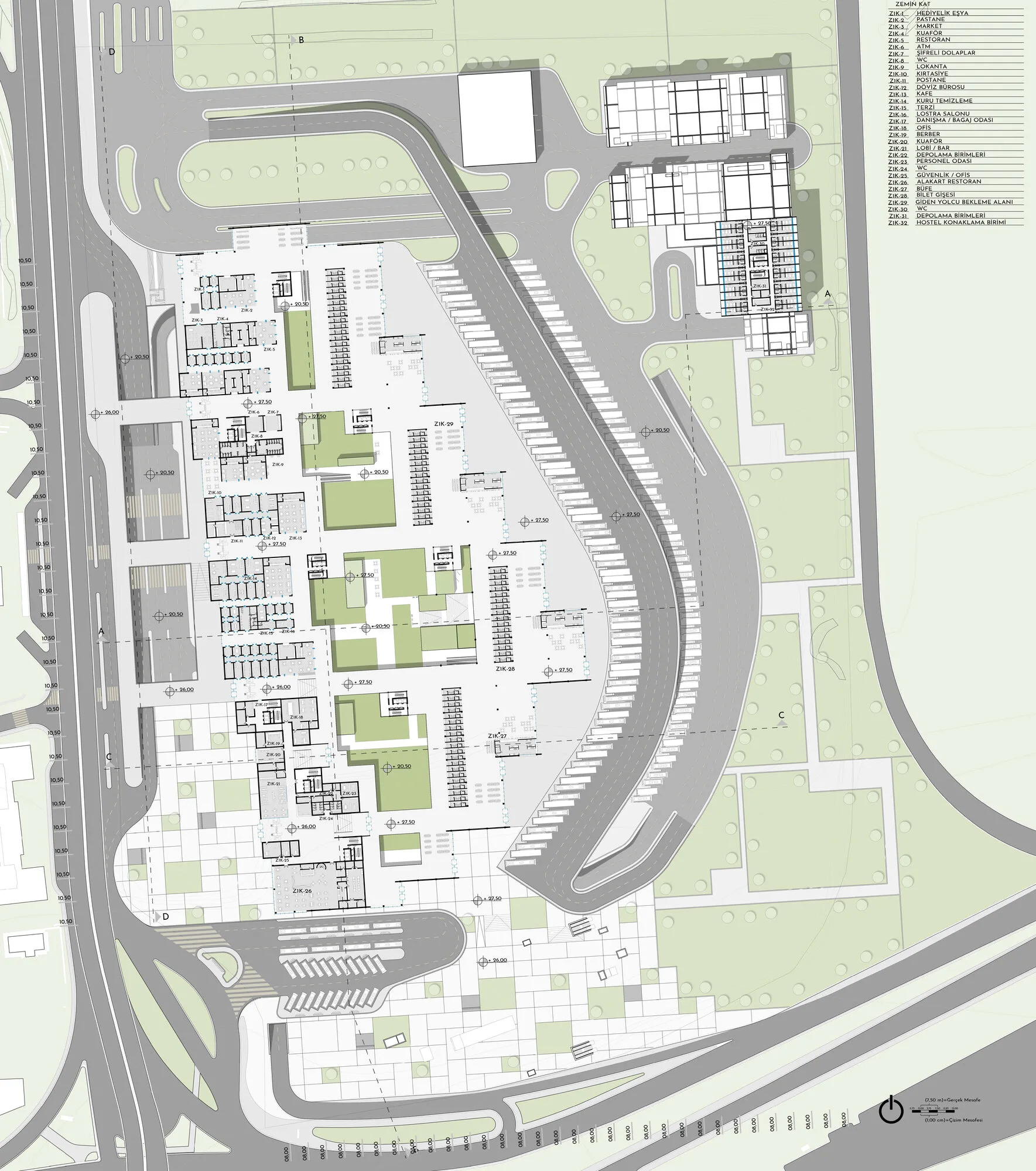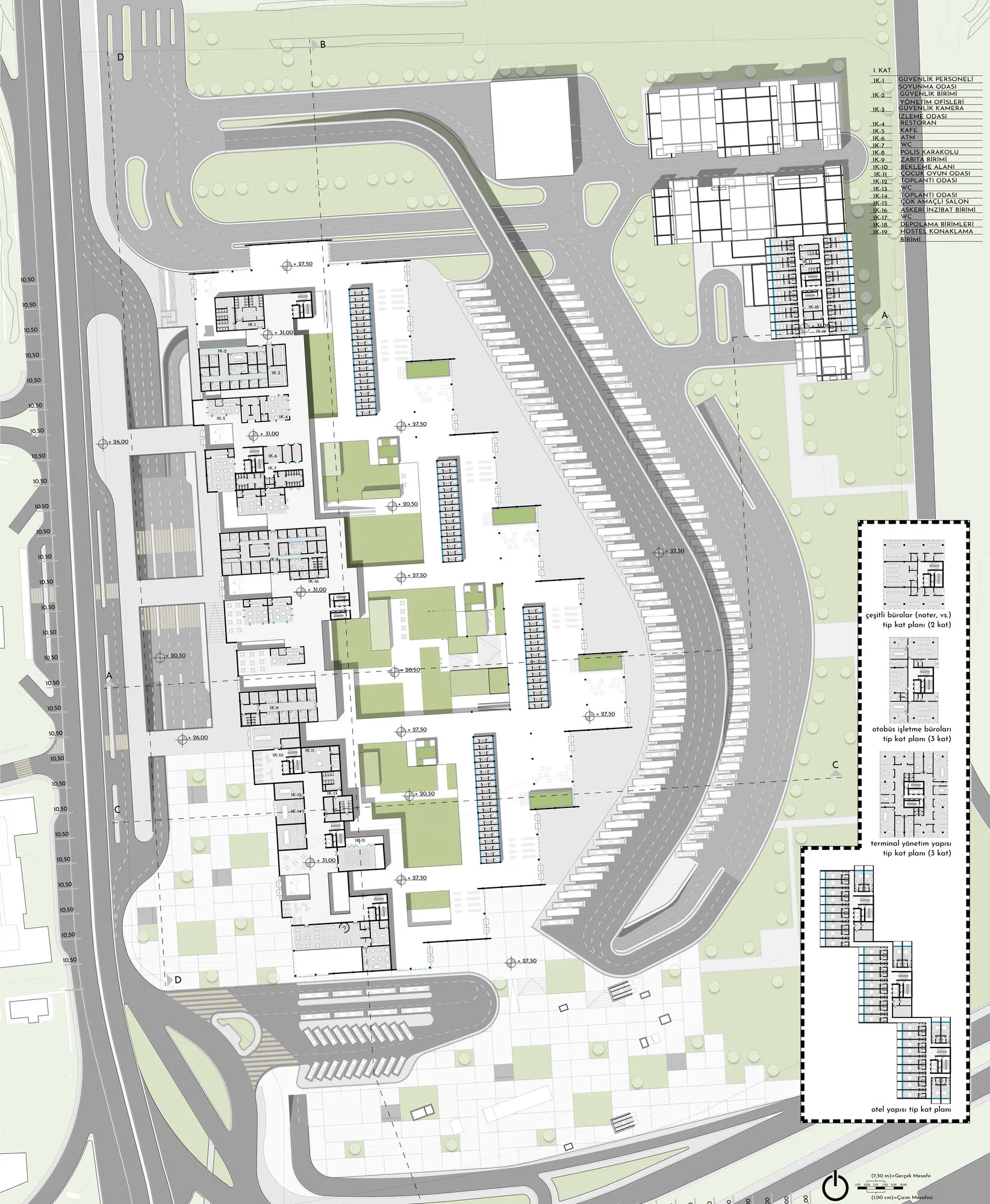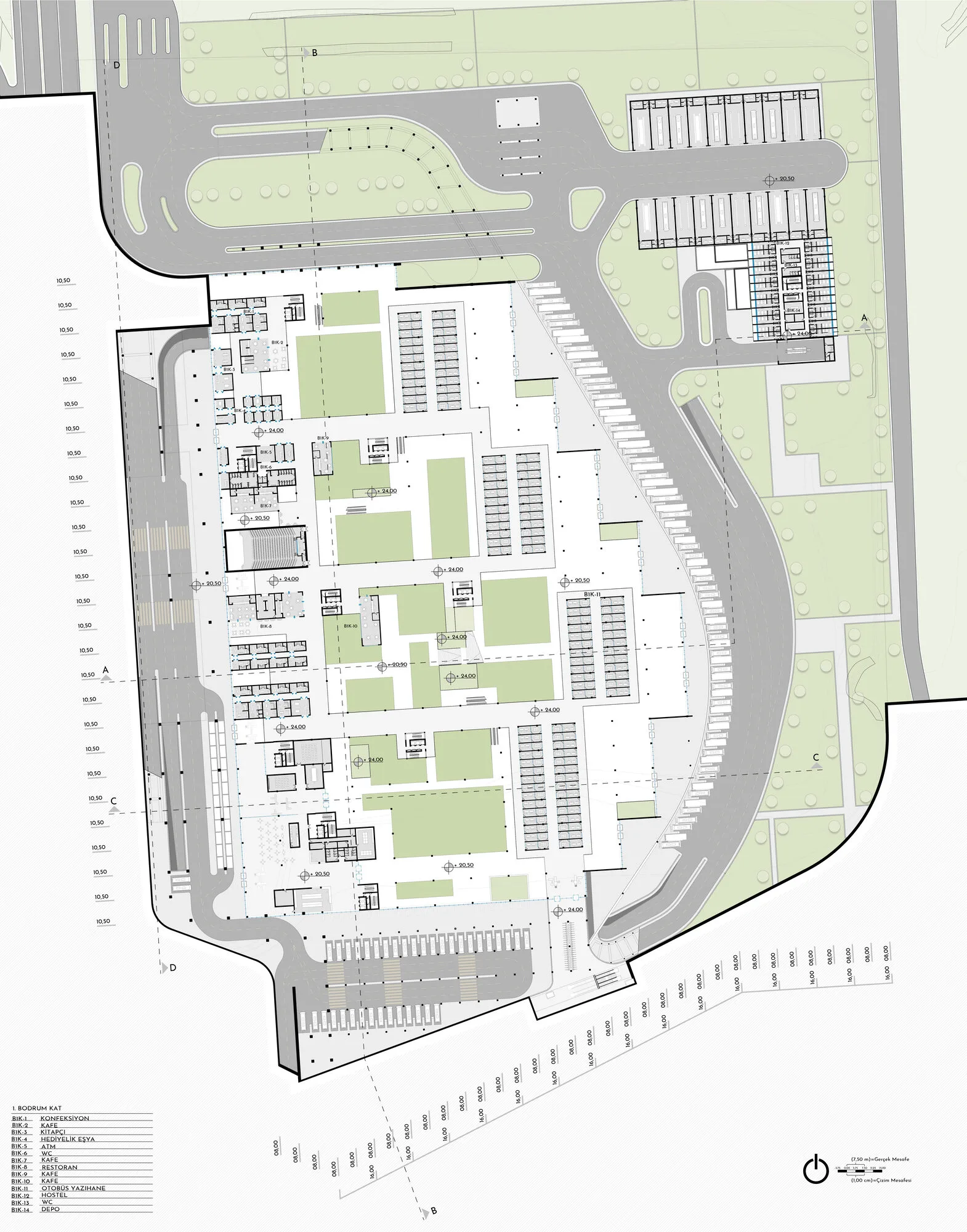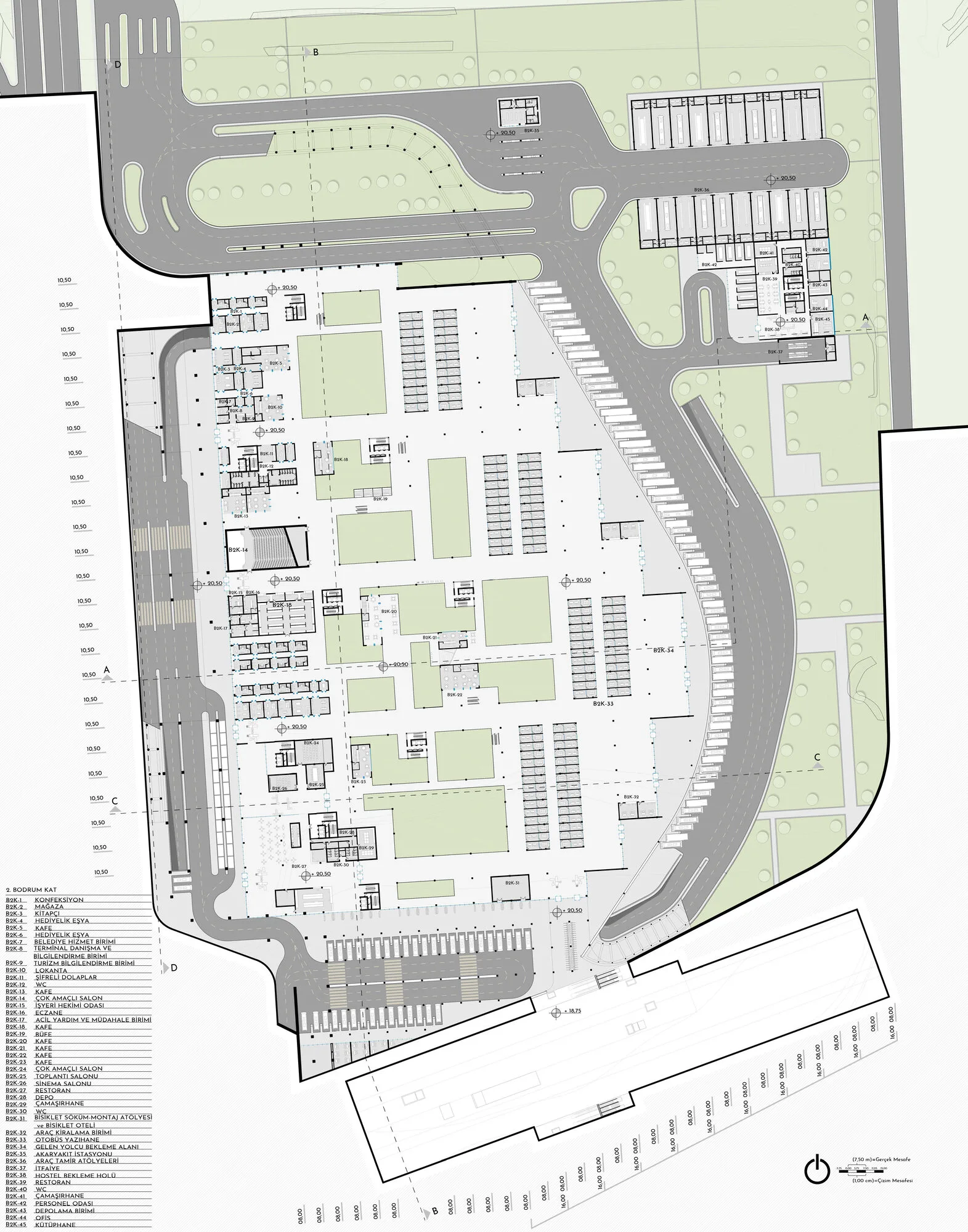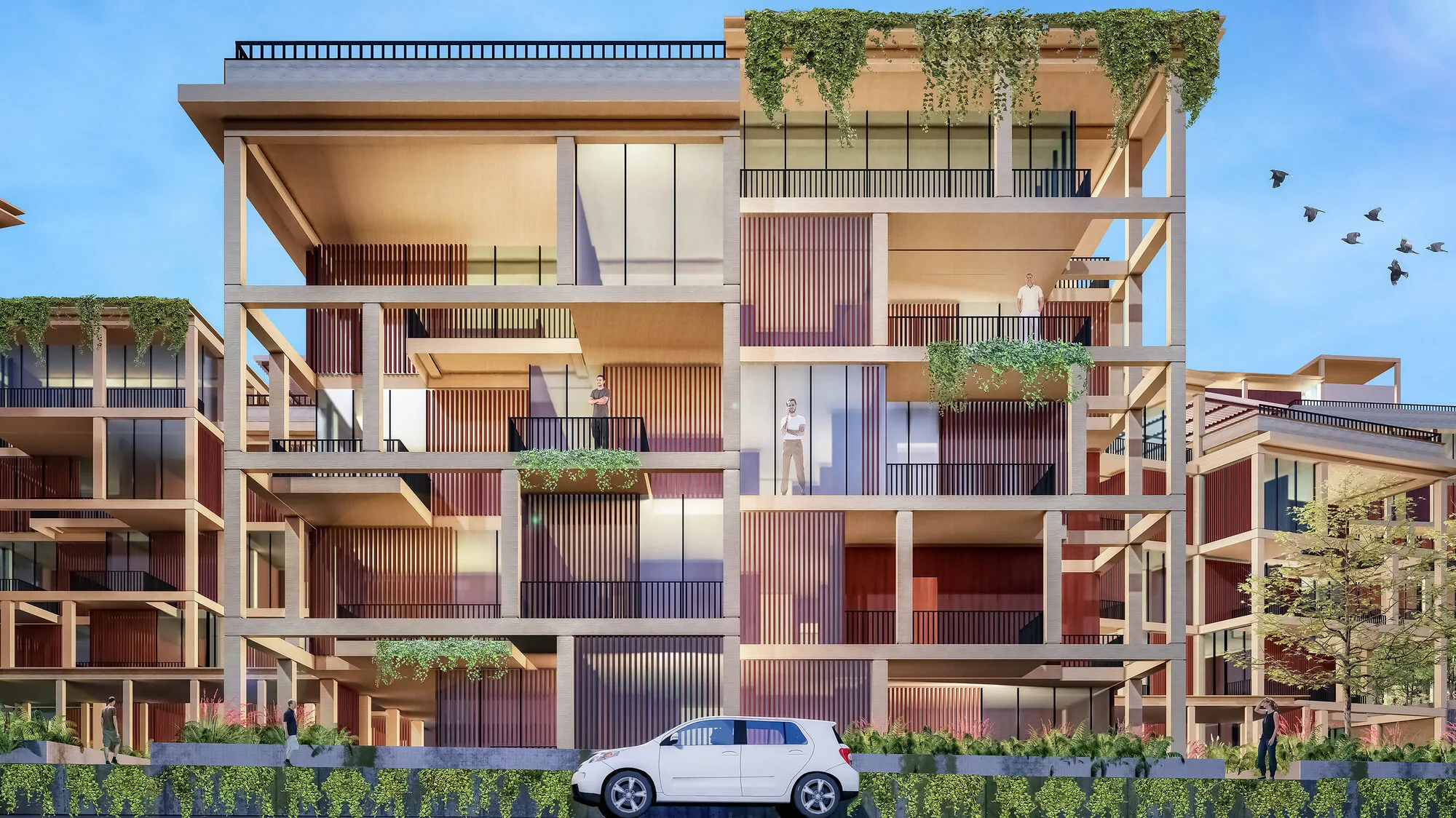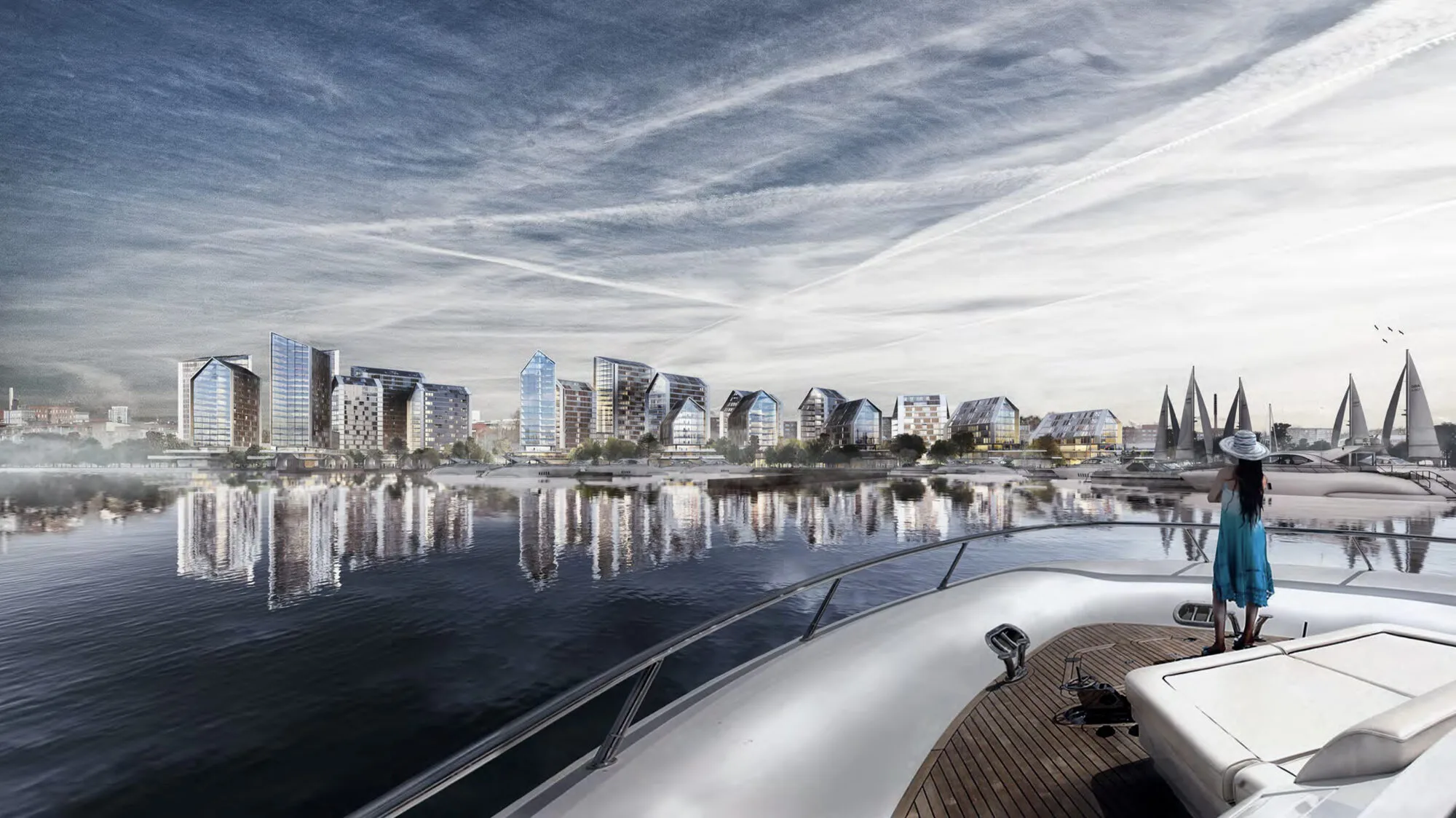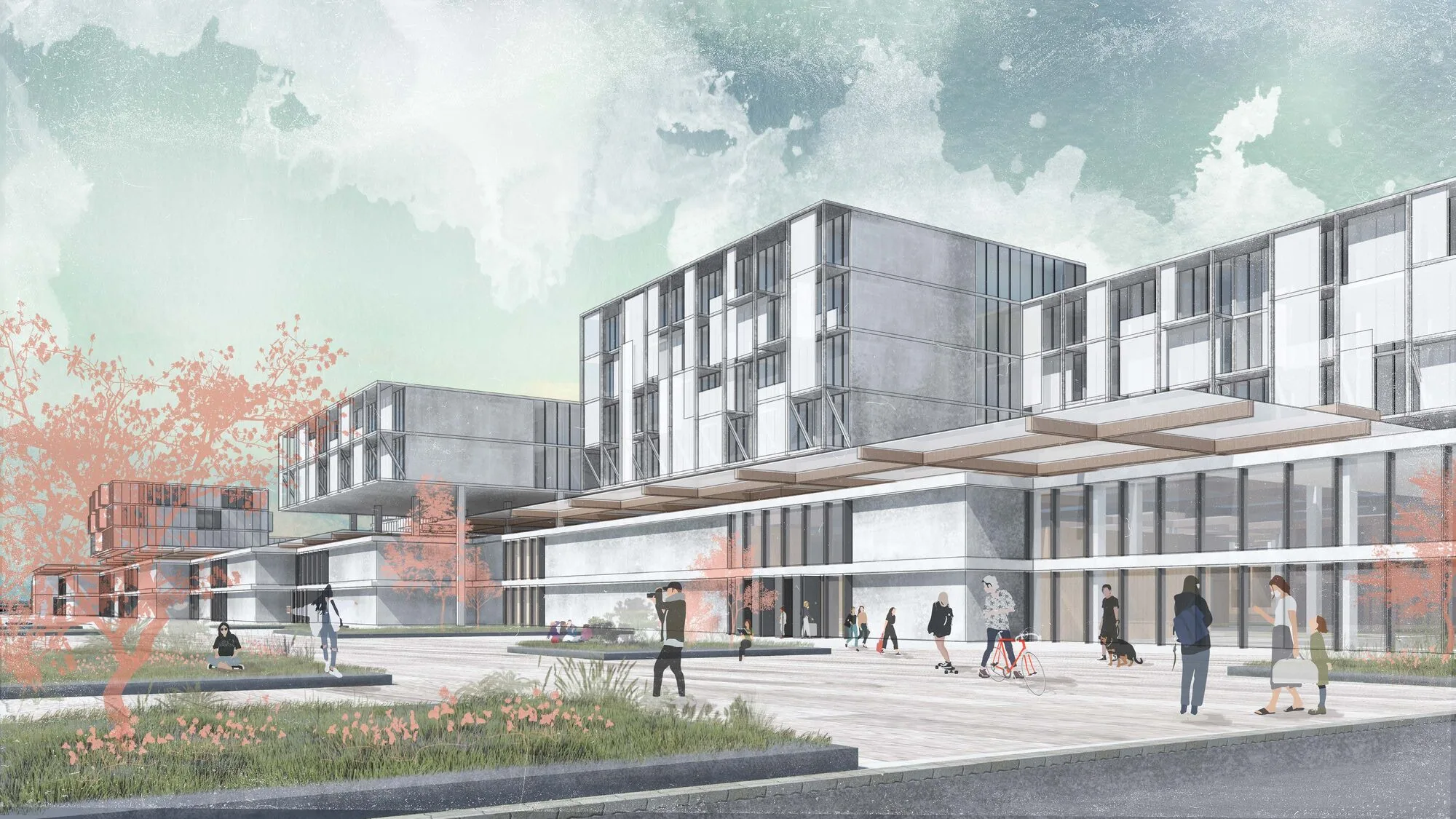
Izmir Transfer Center
Izmir Transfer Center
A Grey Zone at the City’s Edge: İzmir Bus Terminal
The İzmir Main Transfer Center, in addition to being a "Non-Place," occupies a liminal urban location, making it vulnerable to various issues. Much like a heart, the terminal must provide timely access to the right vehicles, manage the typological (inward and outward) separation of transportation modes, and integrate multiple arteries into a unified complex. These factors demand that certain challenges at the intersection of design and the city be addressed.
The current bus terminal structure communicates minimally with the urban fabric, presenting an inward-facing character. The program's anatomy and operational dynamics somewhat legitimize this self-contained network of relationships. Particularly, the stone quarry and concrete plant to the south, whose relocation or transformation is uncertain in the near or medium term, continue to function as an "escape zone." Meanwhile, the site is a key point of entry into the city’s dense network. The industrial structures to the east similarly block interaction between the terminal and the city’s edges.
Heavily trafficked surrounding roads and access ramps encircle the terminal, making it feel like a grey zone. This has led to a natural focus of social interaction and ergonomic accessibility on the western side of the design area. Across the surrounding roads, an "irregular" pattern provides clues to the city's development trajectory, suggesting that pedestrian flows may come from this direction. Additionally, the northern part of the site already benefits from a well-functioning roadway connection.
Izmir Transfer Center
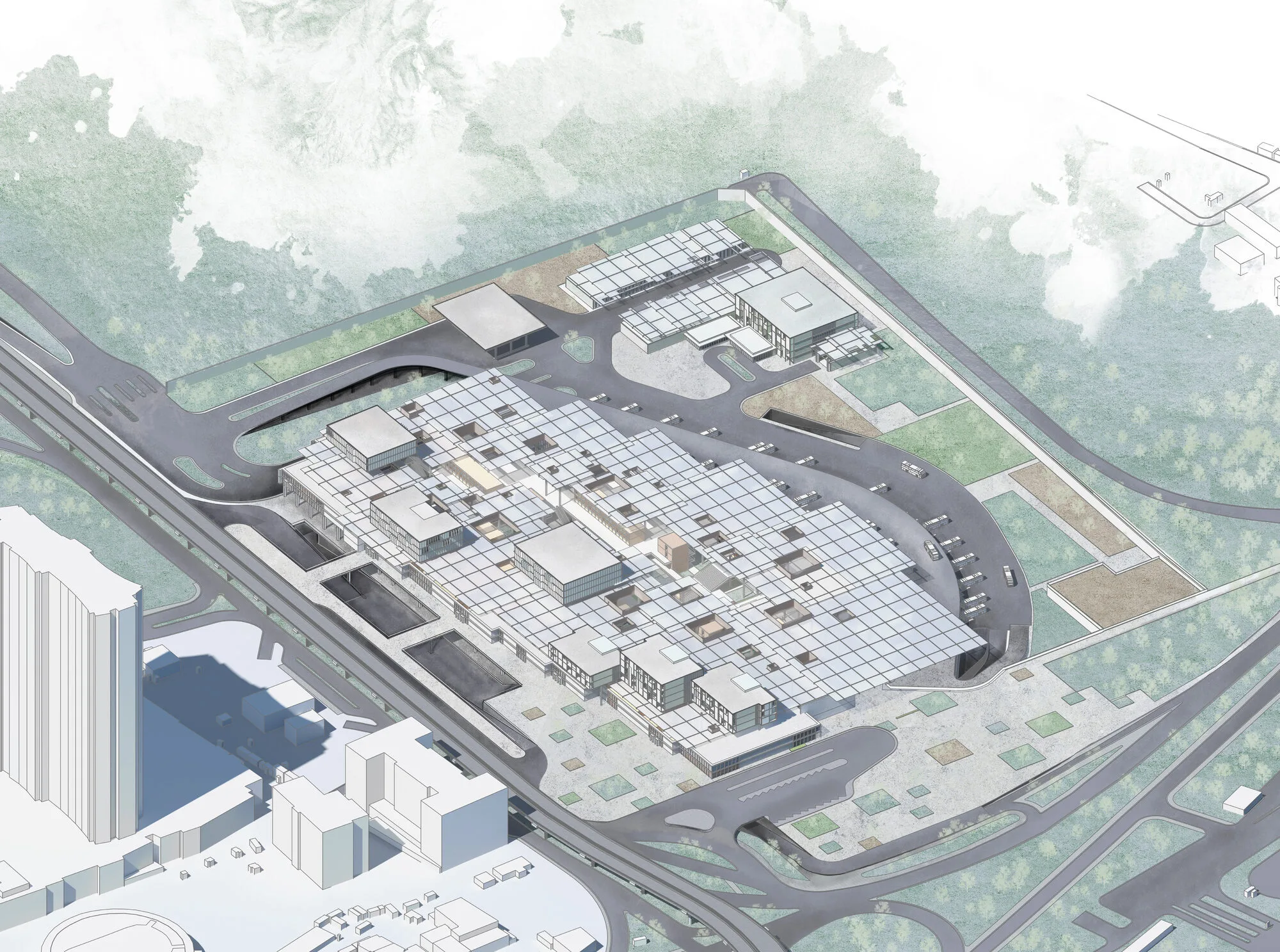
What About a Public Square?
The complex includes inner edges that allow for pedestrian accessibility. The station where the "High-Speed Train" and "İZBAN" connections will be provided, currently under construction, will create a gathering area through its open-access cores and shafts. The use of rail systems as a transportation option for the Transfer Center will likely operate at high capacity. As a result, the station's immediate surroundings take on heightened importance.
Looking at the design area from a larger scale, it is clear that vehicle circulation and traffic density converge around the southwest junction. The "Hotel" structure, which must be located according to the program, finds its optimal position in this area. Thus, a square designed at the intersection of "Eastern Urban Development Zone – Hotel – Public Transport – Rail Transport Station" will address the complex’s need for a forecourt.
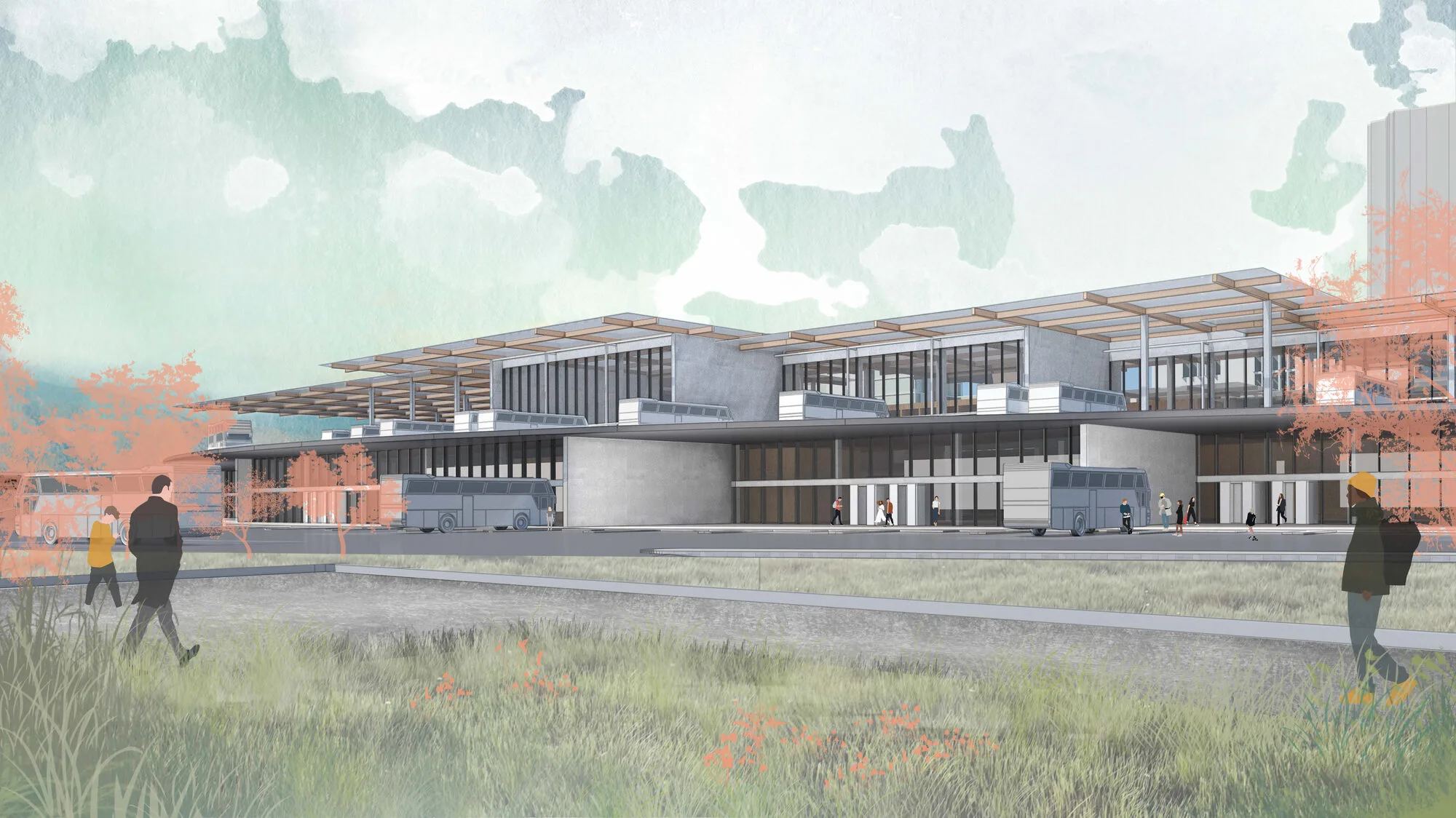
Entry
The existing İzmir Metropolitan Municipality bus terminal is one of the most prominent structures perceived upon entering the city from the northern approach, not only because of its height but also due to its frequent use as a transportation hub. However, as it was not designed solely as a transport structure, it accommodates a variety of uses, leading to occasional functional overlaps. Although the building, designed as a qualified example of eclecticism, cannot be considered a poor example within its typological class, problems related to accessibility, transportation, and structural conditions necessitate its redesign.
The entrance canopies, initially designed with the goal of passive ecological sustainability, including rainwater storage, have not functioned as intended. Over time, unauthorized additions like signage and makeshift workshop units contribute to an unintended and disorganized eclecticism.
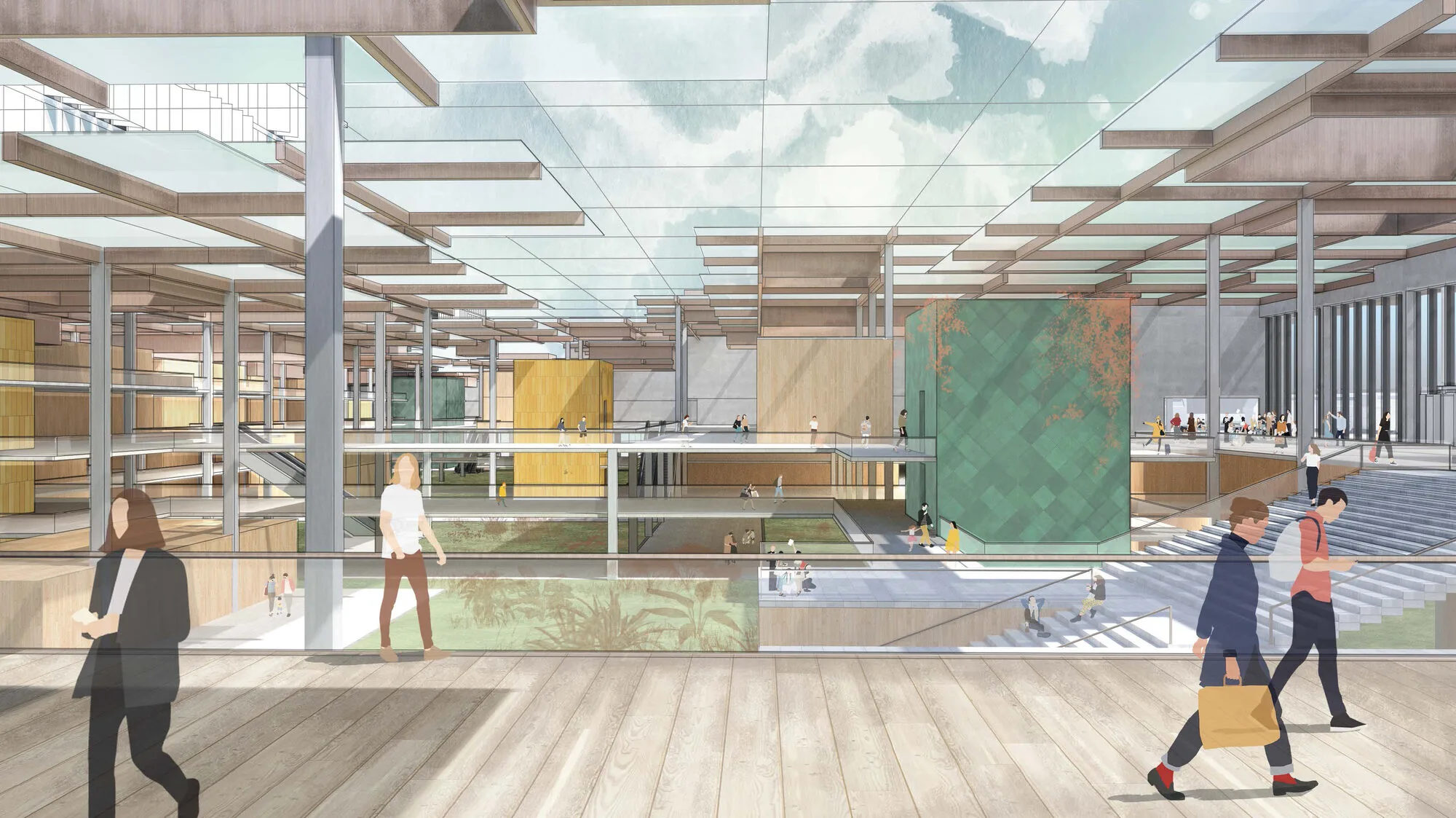
Similarly, the structure struggles to adapt to changing usage patterns, particularly failing to provide effective responses to users in terms of building physics. The open exposure of the platforms to weather, climate control issues in passenger lounges, increasing potential for criminal activity, and the limited integration of technology highlight the adaptation challenges.
The terminal’s current atmosphere encourages users to board their transportation and leave the terminal as quickly as possible, minimizing interaction. However, bus terminals, as one of the most intensely used public structures, should promote social sustainability and user engagement.
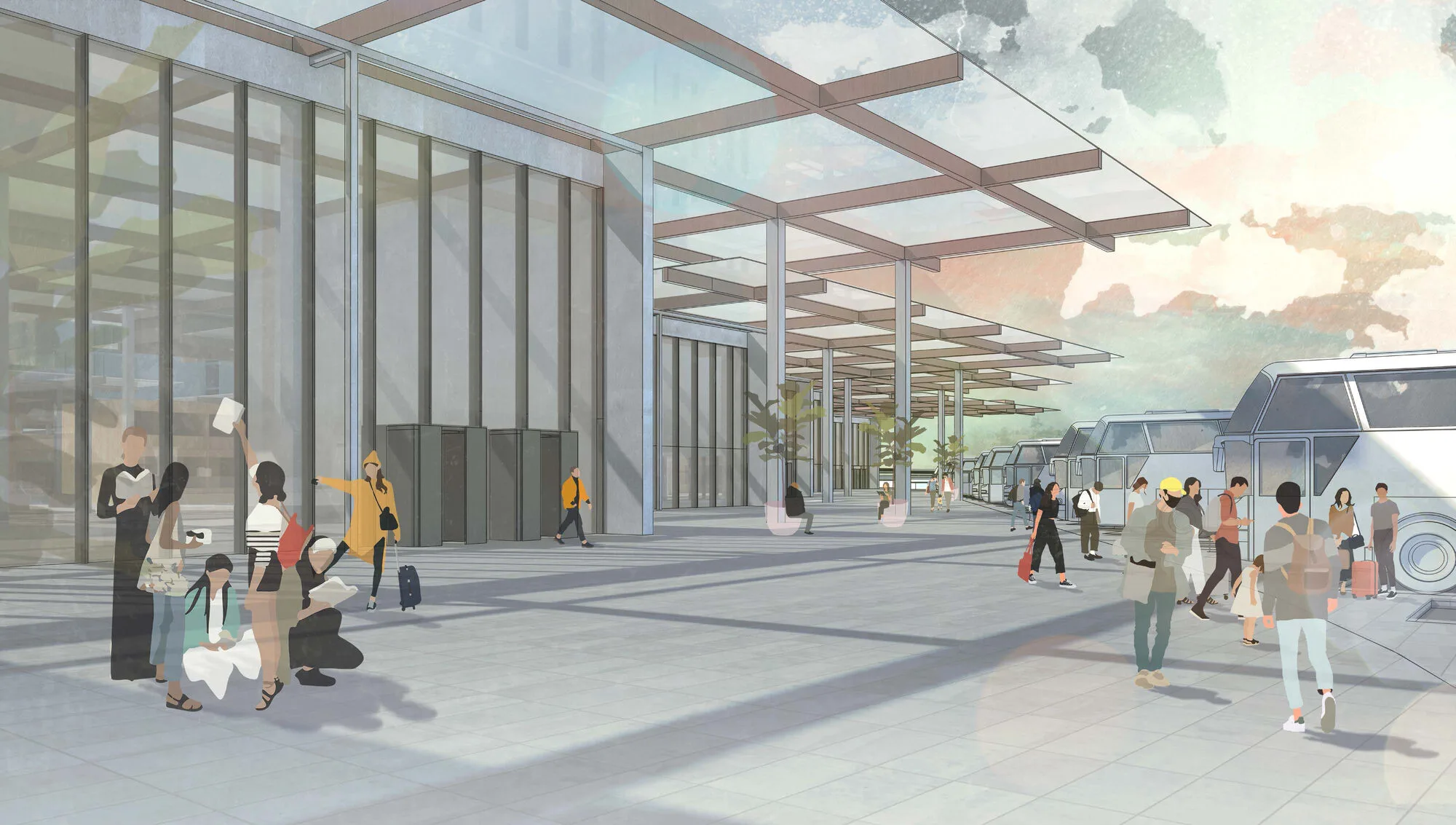
The Concept of the “Non-Place” and Public Use Conflict
As a public structure, bus terminals face common challenges. Due to high circulation of both pedestrians and vehicles, non-permanent users, aside from bus company employees, rarely have opportunities to experience the space. The one-way, linear process of "Ticketing – Baggage Handling – Waiting – Transfer," completed in a short time frame (maximum 2–3 hours), limits the User-Space interaction. Consequently, users do not engage with the space or encounter elements that could allow personalization.
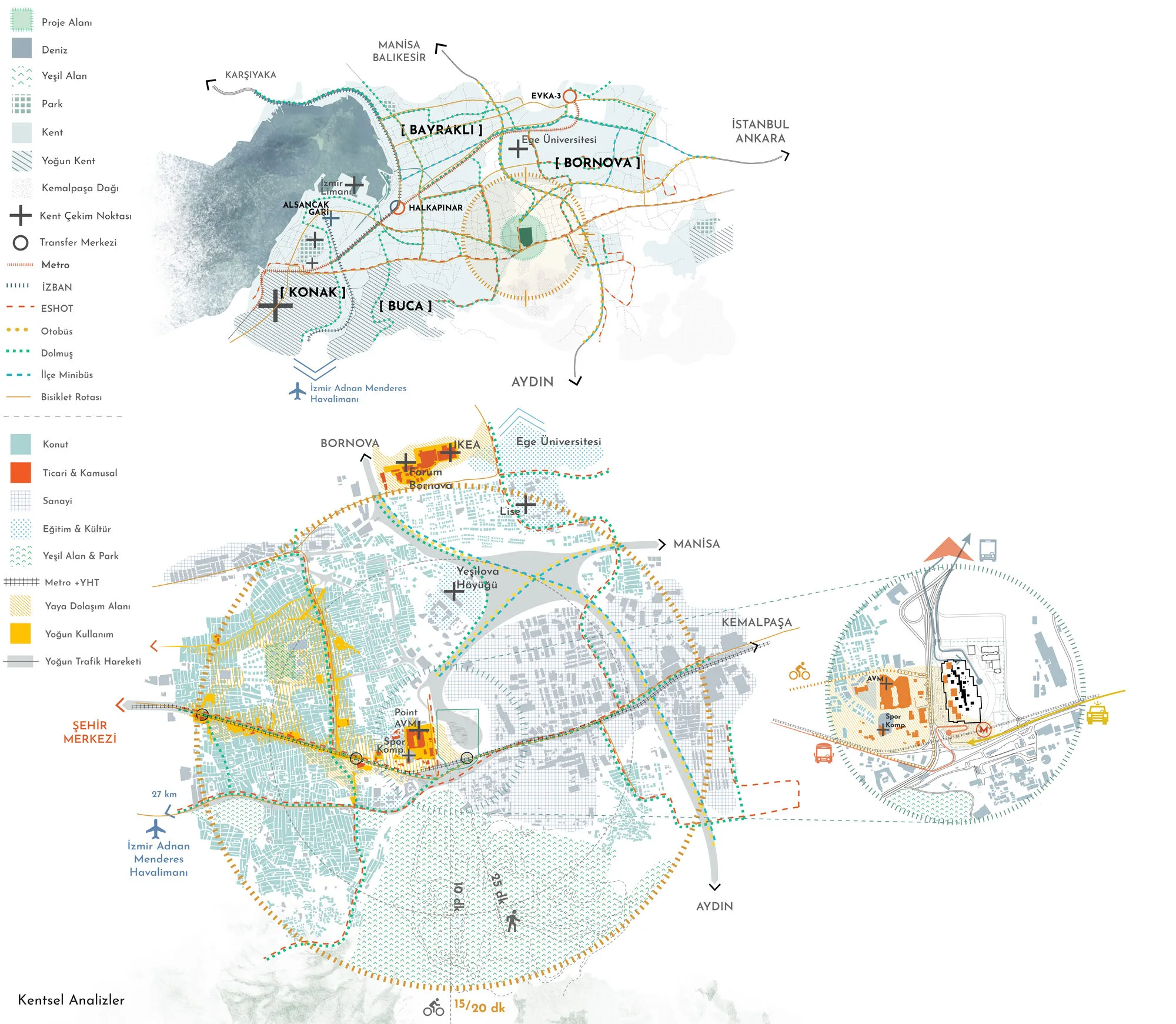
However, this type of structure also plays host to deeply emotional experiences—farewells, departures to new opportunities, and reunions—that would ideally demand a more expressive and engaged design response. The iconic image of the historic Haydarpaşa Train Station in Istanbul, with its terminal building and railway lines, exemplifies how such structures can foster a stronger user connection. While Haydarpaşa benefits from being a historical landmark, other similarly scaled terminals have the potential to foster such experiences but currently fail to do so.
In contemporary architectural discourse, the concept of the "Non-Place" inherently offers opportunities for transformation. The diagnosis of these issues opens the door to potential solutions that can reinvigorate the terminal’s role. Rather than simply being a "Mixed-Use" structure, the integration of varied uses and experiences could elevate the building into a focal point for public interaction, perhaps through green spaces, event bars, cinemas, or exhibitions.
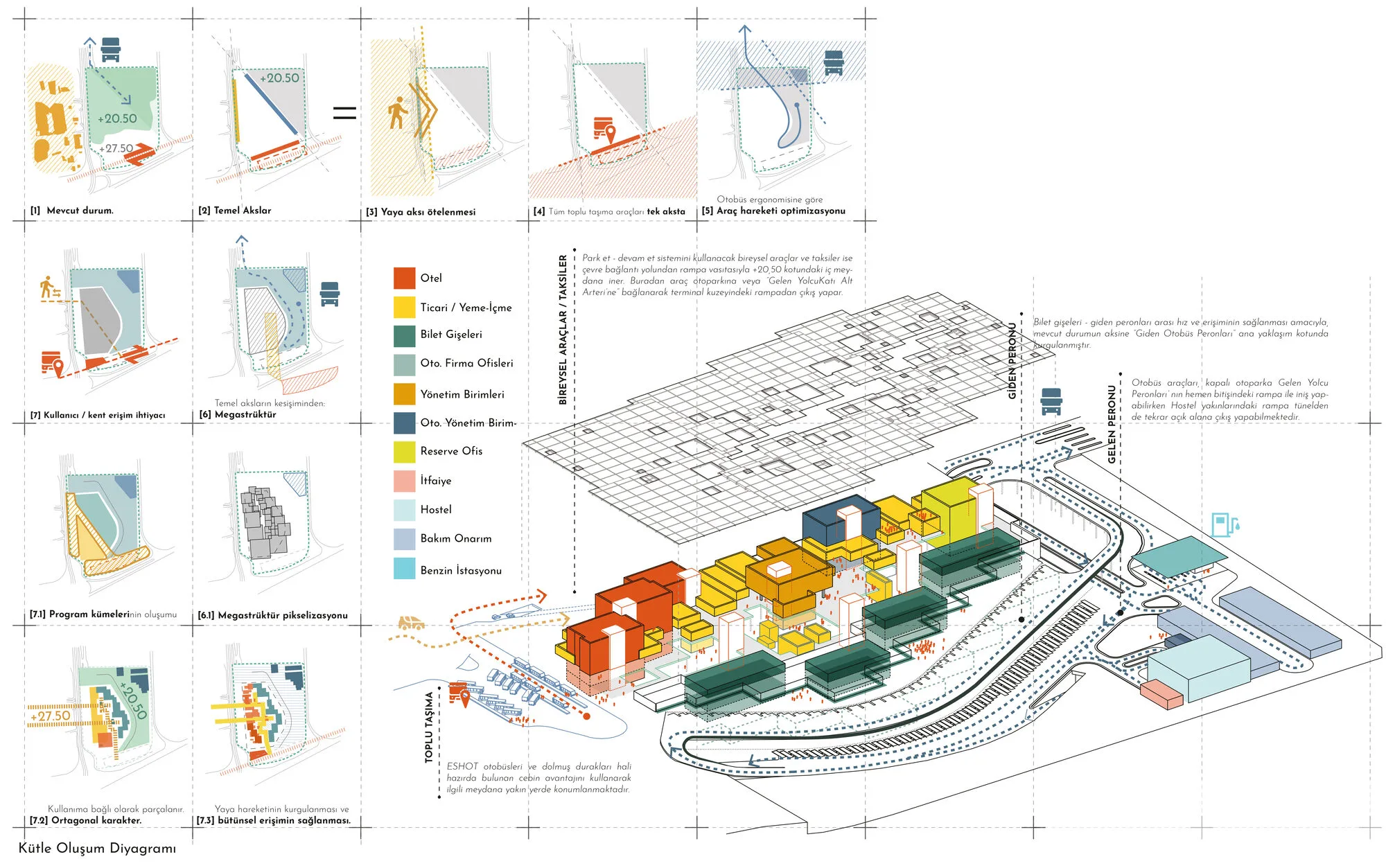
From “Arrivals – Departures” to “Departures – Arrivals”
The upper-level access approach to the design area provides a good reference for the vertical arrangement of the platforms. However, in the current design, the "Arrival Platforms" are placed on the upper level, making it harder for departing passengers to access them directly. The revised design aims to prioritize direct access to the "Ticket Booths" and "Departure Platforms" from the main approach level. Therefore, the "Departure Platforms" are now placed at +27.50 elevation, while the "Arrival Platforms and District Terminal" are at +20.50 elevation.
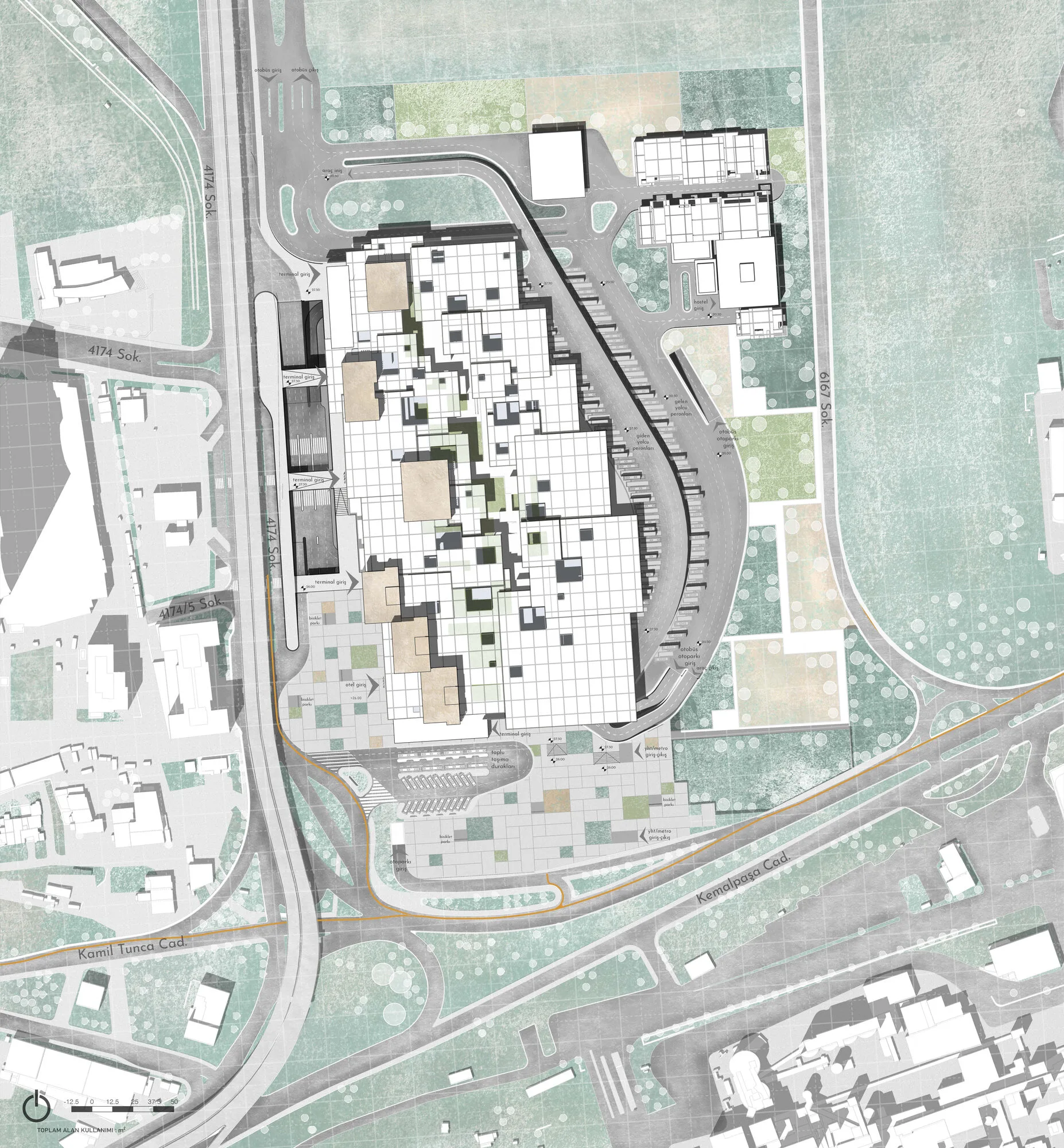
Vehicle Approach and Other Facilities
Approach dynamics vary for different vehicle types. For instance, service vehicles, minibuses, city buses, taxis, ambulances, and private cars each require distinct entrances and circulation routes. The main courtyard near the rail station enables easy access for public transport vehicles, while service vehicles, located near the Arrival Hall, access the complex through a tunnel from the south.
The complex includes numerous units designated for staff use, such as technical maintenance areas and accommodation facilities, located in the northeastern part of the site. These are strategically placed to function independently from the main terminal.
